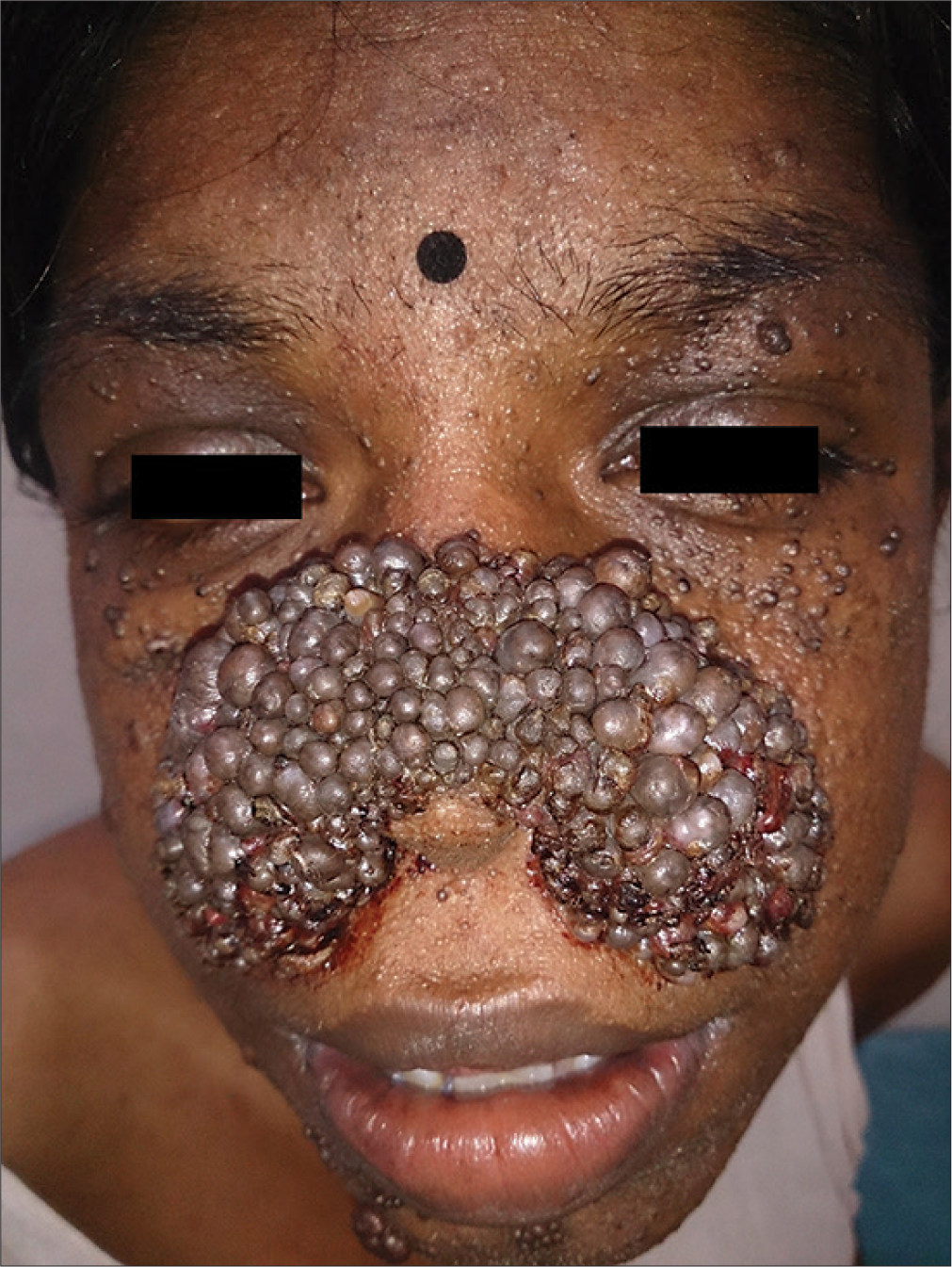Translate this page into:
Extensive and exuberant angiofibromas producing breathing difficulty in a patient with tuberous sclerosis complex
*Corresponding author: Pradeep S. Nair, Department of Dermatology and Venereology, Government Medical College, Trivandrum, Kerala, India. dvmchtvm@yahoo.co.in
-
Received: ,
Accepted: ,
How to cite this article: Nair PS. Extensive and exuberant angiofibromas producing breathing difficulty in a patient with tuberous sclerosis complex. J Skin Sex Transm Dis 2024;6:105-6. doi:10.25259/JSSTD_6_2023.
A 22-year-old woman was referred from the department of oto-rhino-laryngology for face lesions impinging into the nostrils and producing difficulty in breathing. The lesions manifested in childhood, at the age of 3 years and increased in number and size over the course of time. She also gave a history of seizures from the age of 5 years, for which she was receiving phenytoin.
Clinical examination showed multiple, discrete, and confluent erythematous and skin colored papules on cheeks, nasiolabial folds, and nose. The papules were seen extending into the nostrils [Figure 1]. There were similar, discrete papules on the forehead, eyelids, and chin. The patient had single hypopigmented macule on the trunk suggestive of ash leaf macule. There was no shagreen patch or Koenen’s tumor. Magnetic resonance imaging of brain showed subependymal nodules. Chest radiography and ultrasonogram of abdomen were normal. There were no bony abnormalities.

- Extensive, exuberant, multiple, discrete, and confluent angiofibromas on the face and nose.
Skin biopsy of a papule on the face showed multiple vascular spaces with intervening fibroblasts and scanty infiltrate in the dermis diagnostic of angiofibromas. A definite diagnosis of tuberous sclerosis complex was made as she satisfied two major criteria (facial angiofibromas and subependymal nodules). We referred the patient to the plastic surgeon.
We did not come across any previous report of extensive and exuberant angiofibromas interfering with breathing.
Ethical approval
The Institutional Review Board approval is not required.
Declaration of patient consent
The authors certify that they have obtained all appropriate patient consent.
Conflicts of interest
Dr. Pradeep S. Nair is on the editorial board of the Journal.
Use of artificial intelligence (AI)-assisted technology for manuscript preparation
The authors confirm that there was no use of artificial intelligence (AI)-assisted technology for assisting in the writing or editing of the manuscript and no images were manipulated using AI.
Financial support and sponsorship
Nil.





